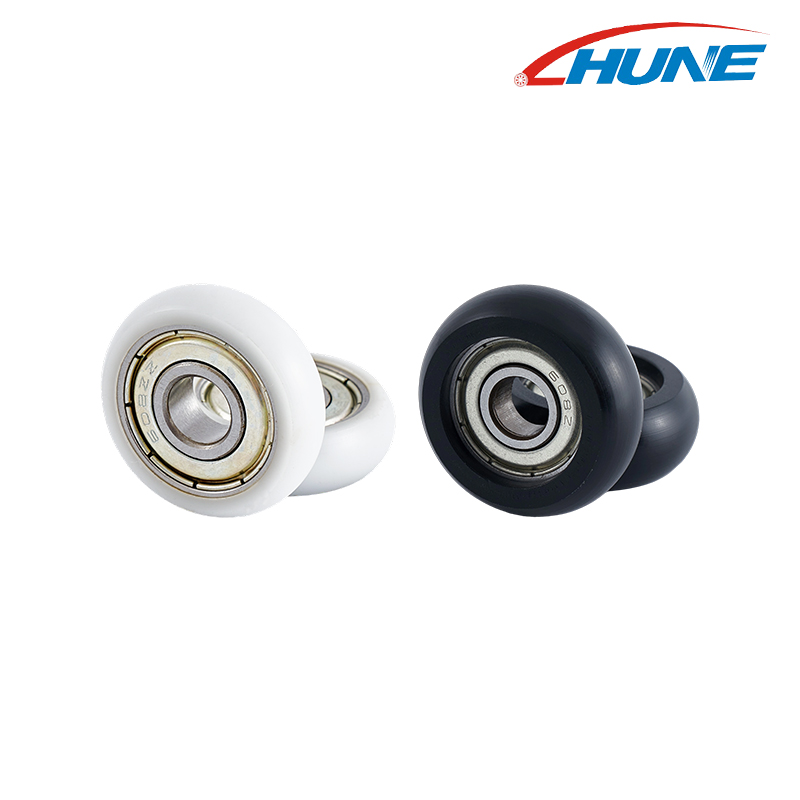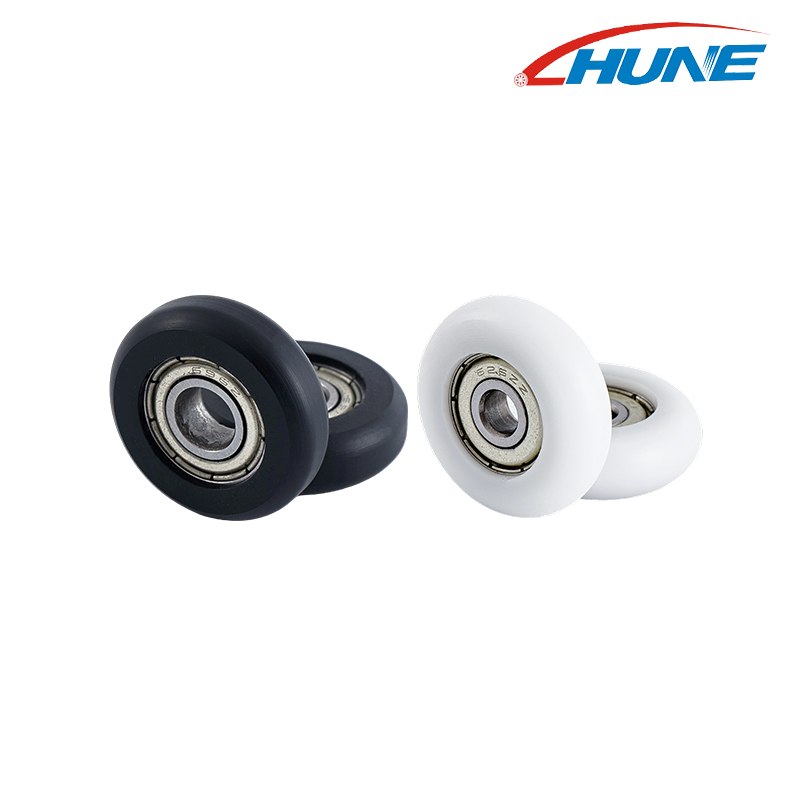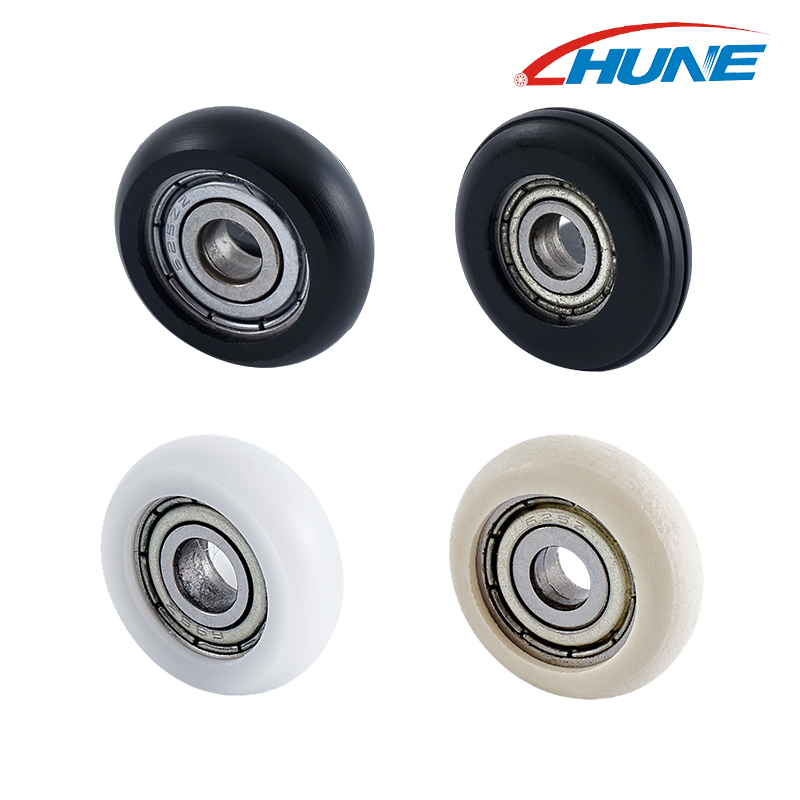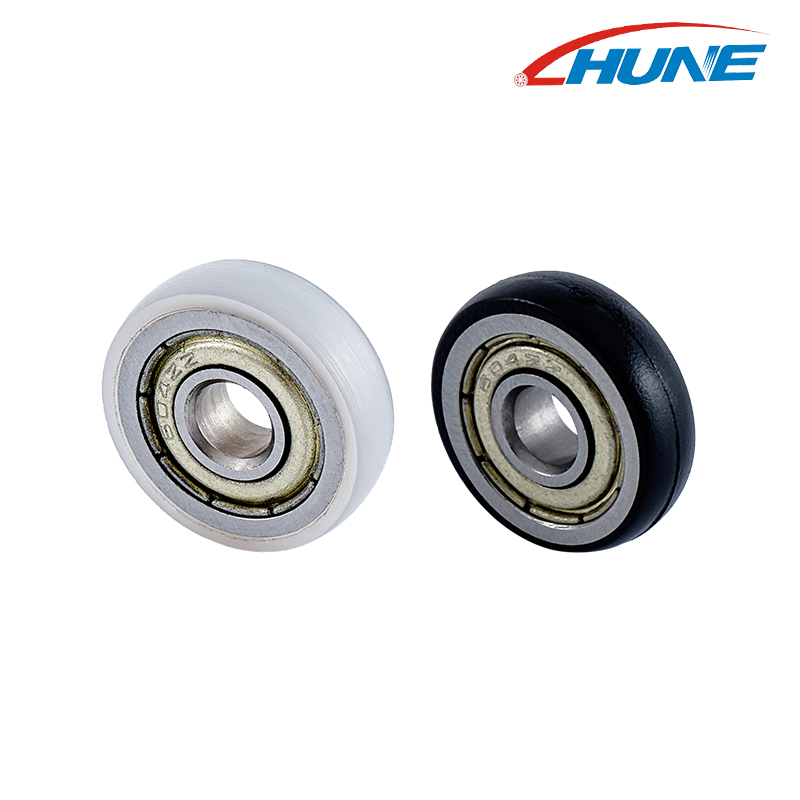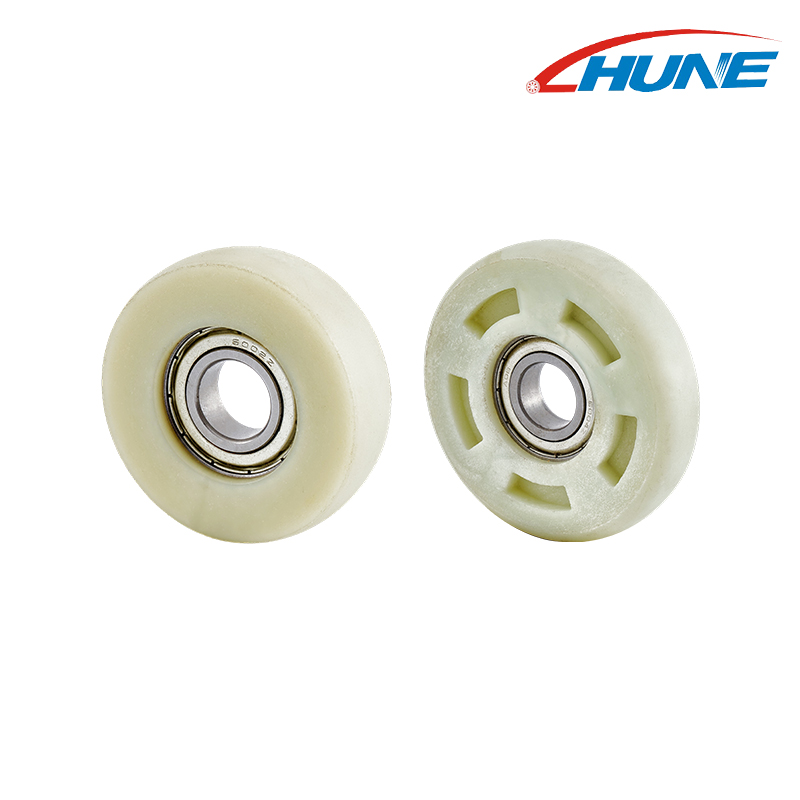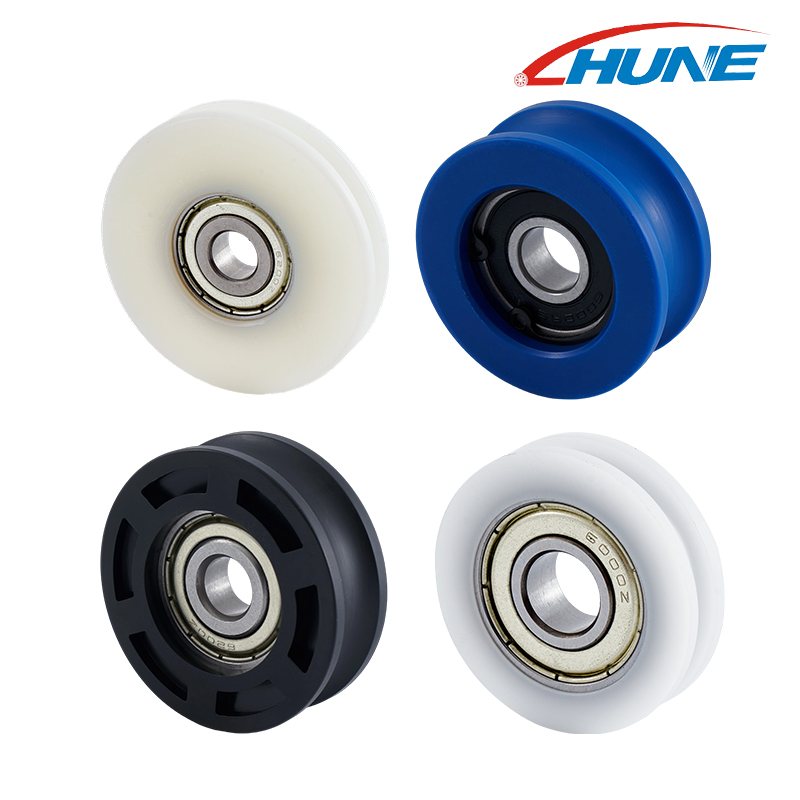When it comes to mechanical systems, the pulley is an essential component that plays a pivotal role in power transmission and efficiency. Selecting the right pulley—whether for an industrial system, automotive machinery, or HVAC equipment—is vital for the long-term performance and cost-effectiveness of the system.
What Are U Type Groove Pulleys?
A U Type Groove Pulley is a specific type of pulley designed with a U-shaped groove that holds the V-belt securely in place. The design ensures that the belt remains properly aligned and prevents slippage, providing efficient power transmission in a variety of applications. The groove maintains tension and optimizes torque transfer between the pulley and the connected belt, which is essential for systems requiring consistent operation and load handling.
Key Features of U Type Groove Pulleys:
Secure Belt Retention: The U-shaped groove keeps the belt firmly in place, preventing it from slipping, which can lead to loss of efficiency and potential damage to the system.
Enhanced Power Transmission: U-type groove pulleys are designed for efficient torque transfer, providing consistent speed and smooth operation.
Durability: Typically made from high-strength materials such as steel, cast iron, or aluminum, U-type groove pulleys are built to withstand heavy loads and harsh environments.
Versatility: U-type groove pulleys are used across a wide range of industries, including automotive, industrial machinery, HVAC systems, and agriculture.
What Types of Belts Can Be Used with U Type Groove Pulleys?
U-type groove pulleys are specifically designed to work with V-belts—a commonly used type of belt in power transmission systems. The U-shaped groove accommodates the following types of V-belts, ensuring that they stay firmly in place and maintain proper alignment throughout their operation:
1. Standard V-Belts
Standard V-belts are the most widely used in various systems. They feature a triangular cross-section, which fits perfectly into the U-shaped groove. These belts are commonly used in general machinery and light-duty applications.Benefits: Cost-effective, widely available, and easy to replace.
Applications: Home appliances, small motors, and pumps.2. Narrow V-Belts
Narrow V-belts are a more compact version of standard V-belts, offering higher load capacity in smaller spaces. These belts are ideal for systems where space is limited but high power transmission is still required.Benefits: High efficiency and compact design for limited space.
Applications: Automotive engines, HVAC systems, and industrial machinery.3. Wedge Belts
Wedge belts are a variation of V-belts, designed to offer higher performance under heavy loads and high-tension applications. The wedge-shaped cross-section allows for a larger surface area, reducing stress on the belt and pulley.Benefits: Increased power transmission and reduced wear in high-load conditions.
Applications: Heavy-duty industrial machinery, mining equipment, and construction machinery.
Applications of U Type Groove Pulleys: Where They Are Typically Used
U Type Groove Pulleys are essential components used across a broad range of industries, offering efficient power transmission and load handling capabilities. These pulleys, designed with a U-shaped groove to securely hold V-belts, play a pivotal role in various applications. Their reliability, performance, and versatility make them a go-to choice for numerous sectors.
1. Motors and Machinery
In motor-driven systems, U-type groove pulleys are widely used to transfer power from the motor to other parts of the system. The secure fit of the V-belt in the U-shaped groove ensures that power is transmitted efficiently, reducing the risk of slippage and maintaining smooth operation. These pulleys are commonly found in:
Industrial motors
Electric motors in heavy machinery
Small engine systems for home appliances2. Conveyors and Material Handling Systems
Conveyors rely heavily on pulleys for the movement of goods and materials. U-type groove pulleys, with their ability to maintain belt stability, are perfect for conveyor systems where continuous, high-performance operation is crucial. They are frequently used in:
Assembly lines
Food processing plants
Packaging facilities
Automated material handling systems3. HVAC Systems
Heating, ventilation, and air conditioning (HVAC) systems depend on pulleys to drive the fans and motors. U-type groove pulleys are well-suited for these applications due to their high durability and ability to withstand continuous operation. They ensure that the system runs efficiently and quietly, even in high-demand environments. Common uses include:
Blower motors
Air conditioning units
Ventilation systems4. Automotive Applications
In automotive systems, U-type groove pulleys are used to drive belts for various functions, including the alternator, air conditioning, and power steering. Their ability to handle high speeds and heavy loads makes them ideal for automotive applications where reliability and consistent performance are essential. These pulleys are found in:
Car engines
Motorcycles
Commercial vehicles5. Industrial Applications
U-type groove pulleys are used in a wide range of industrial machinery, where power transfer is required over long distances. Their ability to maintain consistent tension and handle heavy loads ensures that industrial equipment operates without interruptions. Examples of industrial applications include:
Pumps
Industrial mixers
Centrifuges
Agricultural machinery
|
Application Type |
Description |
Typical Uses |
|
Motors and Machinery |
U-type groove pulleys transfer power from motors to other parts of the system. They provide a secure fit for the V-belt, ensuring efficient power transmission. |
- Industrial motors |
|
Conveyors and Material Handling Systems |
U-type groove pulleys ensure belt stability and high-performance operation in conveyor systems. Ideal for continuous use in material handling. |
- Assembly lines |
|
HVAC Systems |
U-type groove pulleys drive the fans and motors in HVAC systems. Their durability and quiet operation make them ideal for high-demand environments. |
- Blower motors |
|
Automotive Applications |
U-type groove pulleys are used in automotive systems to drive belts for components like the alternator, air conditioning, and power steering. |
- Car engines |
|
Industrial Applications |
U-type groove pulleys maintain consistent tension and handle heavy loads in industrial machinery, ensuring uninterrupted operation. |
- Pumps |
What Are the Advantages of Using U Type Groove Pulleys?
U-type groove pulleys offer a number of distinct advantages that contribute to their widespread use in various industries.
1. Enhanced Belt Stability
One of the primary benefits of using U-type groove pulleys is their ability to provide superior belt stability. The U-shaped groove ensures that the V-belt fits securely, reducing the risk of slippage and misalignment. This stability is crucial in preventing the loss of torque and ensuring that the system operates efficiently without interruptions.Benefit: Reduced slippage and better grip, leading to smoother operation.
2. Improved Power Transmission
U-type groove pulleys are designed to maintain consistent belt tension, which is essential for efficient power transfer. The pulley's groove ensures the belt stays in place, minimizing slack and maintaining the necessary force to drive the connected machinery. This improves the system's overall efficiency by optimizing torque transfer and reducing the likelihood of energy loss.Benefit: More reliable and efficient power transmission in demanding applications.
3. Durability
Built from high-quality materials such as steel, cast iron, and aluminum, U-type groove pulleys are engineered for longevity. These pulleys are designed to withstand heavy loads, high-speed operations, and harsh environments. Their robust construction makes them ideal for both high-load and high-demand applications, ensuring reliable performance over time.Benefit: Extended service life and minimal maintenance, even in tough conditions.
4. Cost-Effectiveness
U-type groove pulleys strike a perfect balance between affordability and durability, making them an excellent choice for applications where cost-effectiveness is a key concern. With their long-lasting construction and minimal need for maintenance, these pulleys offer great value for money. Additionally, their widespread availability and low-cost manufacturing contribute to their affordable pricing.Benefit: Low upfront cost combined with long-term savings due to reduced maintenance and downtime.
Key Factors to Consider When Choosing a U Type Groove Pulley
1. Belt Size and Compatibility:
Importance of matching the V-belt size with the groove size.
Explanation of standard belt sizes and the compatibility with U-type groove pulleys.
Considerations for different V-belt types (e.g., standard, narrow, wedge belts).
2. Load Capacity:
Determining the load requirements of your system.
How to match the pulley's load capacity with the power transmission needs.
Factors such as torque, belt tension, and stress.
3. Pulley Diameter and Groove Depth:
The relationship between the diameter of the pulley and its function in maintaining optimal belt tension.
How the groove depth affects belt grip and alignment.
Recommendations for selecting the appropriate size for your system.
4. Material Selection:
Choosing between steel, cast iron, and aluminum based on environment, load, and durability needs.
Corrosion resistance and heat tolerance: choosing materials that suit specific industrial environments (e.g., corrosive environments, high-temperature settings).
|
Consideration |
Description |
Importance |
Tip |
|
Belt Size and Compatibility |
Ensure the V-belt size matches the groove size. Consider different belt types like standard, narrow, and wedge belts. |
Prevents slippage, ensures efficient power transmission, and prolongs belt and pulley life. |
Refer to manufacturer specifications for belt size compatibility with the pulley. |
|
Load Capacity |
Determine the system’s load requirements and match the pulley’s load capacity with these needs. Consider torque, belt tension, and stress. |
Ensures the pulley can handle the required load without premature wear or failure. |
Always check the load ratings and torque requirements for the specific application. |
|
Pulley Diameter and Groove Depth |
The pulley diameter affects belt tension, while groove depth influences belt grip and alignment. |
Proper diameter and groove depth ensure stable belt operation and reduce slippage. |
Choose a pulley with the correct diameter and groove depth to maintain proper belt tension. |
|
Material Selection |
Choose materials (steel, cast iron, aluminum) based on environmental conditions, load, and durability needs. Consider corrosion resistance and heat tolerance. |
Ensures the pulley can withstand environmental factors like corrosion and high temperatures. |
For harsh environments, select corrosion-resistant materials like stainless steel or aluminum. |
How Do I Maintain U Type Groove Pulleys?
To ensure optimal performance and longevity of U-type groove pulleys, regular maintenance is essential. Proper care prevents premature wear and enhances their operational efficiency.
Inspect for Wear:
Regularly examine the groove and the material for any signs of damage, cracks, or wear. Over time, constant friction with the V-belt may cause degradation, which can impact pulley performance.
Lubrication:
Proper lubrication of the pulley's bearings or shaft is crucial. Apply grease or oil as recommended by the manufacturer to reduce friction, minimize wear, and enhance the longevity of the pulley.
Clean the Pulley:
Keep the pulley free from dirt, debris, and grime that may accumulate over time. Cleaning the pulley regularly ensures smooth operation and prevents contamination that could interfere with the belt's movement.
Check Belt Alignment:
Ensure that the V-belt sits correctly in the groove. Misalignment can lead to uneven wear and potential damage to both the pulley and the belt. Adjust the tension and alignment to maintain balance and efficiency.
|
Maintenance Task |
Description |
Importance |
Tip |
|
Inspect for Wear |
Regularly examine the groove and material for damage, cracks, or wear caused by friction with the V-belt. |
Prevents degradation that could impact pulley performance. |
Inspect the groove for visible damage and cracks to ensure smooth operation. |
|
Lubrication |
Proper lubrication of the pulley’s bearings or shaft is essential. Apply grease or oil as recommended by the manufacturer. |
Reduces friction, minimizes wear, and enhances pulley longevity. |
Regularly check and reapply lubricant to maintain smooth operation. |
|
Clean the Pulley |
Remove dirt, debris, and grime that may accumulate on the pulley over time. |
Prevents contamination and ensures smooth belt movement. |
Use a soft cloth and appropriate cleaner to avoid damaging the surface. |
|
Check Belt Alignment |
Ensure that the V-belt sits correctly in the groove. Misalignment can cause uneven wear. |
Prevents damage to both the pulley and the belt, maintaining system efficiency. |
Adjust the tension and alignment to prevent slippage and excessive wear. |
System Requirements and Application Types for U-Type Groove Pulleys
U-type groove pulleys are versatile components used across various industries. Choosing the right pulley depends on the application and system requirements.
1. Industrial Applications
U-type groove pulleys are often used in industrial machinery, conveyors, and high-torque systems. These settings demand pulleys that can handle heavy loads and high stress. Key considerations include:
Material Durability: Choose pulleys made from high-quality materials such as cast iron, steel, or aluminum, depending on the load and environmental conditions.
Torque Capacity: Select pulleys that are capable of handling the high torque produced by large machines and conveyor systems.
Heavy-Duty Design: Industrial pulleys must be designed to withstand continuous operation and frequent belt movements without degradation.
Typical Uses:
Manufacturing plants
Automated production lines
Large conveyor systems
2. Commercial Use
In commercial applications such as HVAC systems, elevators, and escalators, U-type groove pulleys are critical for ensuring smooth and efficient operation. The requirements here tend to be slightly different:
Space Efficiency: Pulleys used in commercial settings should be compact while still offering high performance.
Reduced Noise and Vibration: For quiet operation in places like elevators, pulleys with noise-dampening features may be preferred.
Energy Efficiency: Commercial systems typically require pulleys that reduce energy consumption while ensuring consistent performance.
Typical Uses:
HVAC systems in commercial buildings
Elevators and escalators in malls and offices
Air conditioning units
3. Residential and DIY Applications
For home workshops, DIY projects, or light-duty systems, U-type groove pulleys provide a cost-effective and durable solution. When choosing pulleys for residential applications, consider the following:
Budget-Friendly Options: Residential setups don't require the same heavy-duty features, so it's important to select pulleys that are affordable without compromising on basic quality.
Light-Duty Design: These pulleys should be capable of handling lower torque and minimal load but should still be durable enough for occasional use.
Ease of Installation: DIY projects often require easy-to-install components, so pulleys with straightforward setups are ideal.
Typical Uses:
Home workshops
DIY pulley systems for small machines
Light-duty conveyor or elevator systems
Avoiding Common Mistakes When Selecting U-Type Groove Pulleys
Selecting the correct U-type groove pulley is crucial for efficient power transmission and long-term system performance. Many users make avoidable mistakes that compromise efficiency, cause premature wear, or lead to system failure.
Overestimating or Underestimating Load Capacity
Choosing a pulley without accurately considering the system's torque and load requirements can be disastrous.
Underestimating load: May cause the pulley to wear prematurely or fail under stress.
Overestimating load: Can result in unnecessary cost and heavier components that add strain to the system.
Tip: Always refer to manufacturer load ratings and match the pulley to your system's operational torque.
Incorrect Material Selection
The environment in which the pulley operates significantly affects material choice.
For example, using a standard steel pulley in a highly corrosive environment can lead to rust, reduced efficiency, and early failure.
Tip: Choose corrosion-resistant materials like stainless steel or aluminum for humid or chemical-exposed environments, and ensure compatibility with the intended operational conditions.
Sizing Errors
Selecting the wrong pulley size can impact belt alignment, tension, and overall system efficiency.
Too small: May increase belt slippage and wear, reducing the life of both the belt and the pulley.
Too large: Can strain the system, increase energy consumption, and lead to misalignment issues.
Tip: Always measure the intended belt and system layout carefully before finalizing pulley size.
|
Common Mistake |
Description |
Consequences |
Tip |
|
Overestimating or Underestimating Load Capacity |
Choosing a pulley without accurately considering the system’s torque and load requirements. |
Underestimating load: Premature wear or failure under stress. |
Always refer to manufacturer load ratings and match the pulley to your system’s operational torque. |
|
Incorrect Material Selection |
Selecting a pulley material that is incompatible with the operating environment. |
Using steel in corrosive environments can lead to rust, reduced efficiency, and early failure. |
Choose corrosion-resistant materials like stainless steel or aluminum for humid or chemical-exposed environments. Ensure compatibility with operational conditions. |
|
Sizing Errors |
Selecting the wrong pulley size affects belt alignment, tension, and system efficiency. |
Too small: Increased belt slippage and wear. |
Measure the belt and system layout carefully before finalizing pulley size. |
Choosing Between U-Type Groove Pulleys and Other Pulley Types
Understanding the differences between pulley types ensures you select the most efficient solution for your system.
U-Type Groove Pulleys vs. Flat Pulleys
Belt Stability: U-type grooves provide better V-belt retention and reduce slippage. Flat pulleys rely on friction and may not secure belts under high load.
Load Capacity: U-type groove pulleys handle higher torque and load due to their V-shaped design.
When to Choose Flat Pulleys: Ideal for flat belts, low-torque systems, or applications where belt tracking is less critical.
U-Type Groove Pulleys vs. Sheave Pulleys
Application Differences: Sheave pulleys are commonly used in rope or cable-driven systems, while U-type groove pulleys are designed for V-belt-driven systems.
Advantages of Sheave Pulleys: Excellent for lifting, hoisting, or systems requiring flexible cable routing.
Comparison: While U-type groove pulleys excel in power transmission for belts, sheave pulleys offer versatility in rope or wire applications.
U-Type Groove Pulleys vs. Timing Pulleys
Precise Synchronization: Timing pulleys feature teeth that engage with a corresponding belt for accurate motion control.
Power Transmission Efficiency: U-type groove pulleys offer smooth torque transfer and are ideal for general V-belt systems, whereas timing pulleys are preferred when exact timing and synchronization are critical.
When to Choose Timing Pulleys: Applications requiring precise motion control, such as CNC machines, robotics, or automated production lines.
FAQ
Q1. Can U Type Groove Pulleys Be Used for High-Speed Applications?
Yes, U-type groove pulleys are suitable for high-speed applications. However, it's essential to ensure the pulley is properly balanced and sized for your system to minimize vibration and ensure smooth operation. High-quality materials such as steel or aluminum are often used for high-speed systems to maintain stability.
Q2. Can U Type Groove Pulleys Be Used for Rope-Driven Systems?
No, U-type groove pulleys are specifically designed for V-belt systems, not for rope-driven systems. For rope applications, sheave pulleys are typically used, as they are designed to accommodate cables or ropes.
Q3. Are U Type Groove Pulleys Available in Custom Sizes?
Yes, many manufacturers offer custom-sized U-type groove pulleys. You can request specific dimensions, materials, and configurations to suit unique applications, especially in industrial or custom machinery.
Q4. Can U Type Groove Pulleys Be Used Outdoors?
Yes, U-type groove pulleys can be used outdoors, but you should select pulleys made from weather-resistant materials like stainless steel or coated steel for better corrosion resistance. This is especially important in humid or corrosive environments where the pulley might be exposed to moisture or chemicals.
Q5. Can U Type Groove Pulleys Be Used in Food or Medical Equipment?
Yes, but ensure the pulley is made of stainless steel or FDA-compliant materials to meet hygiene and safety standards.
Q6. Are U Type Groove Pulleys Available with Bearings?
Yes, many U Type Groove Pulleys are available pre-mounted with bearings for easier installation and smoother operation. Bearings reduce friction, improve rotation stability, and extend the lifespan of both the pulley and the belt system. When selecting a pulley with bearings, it's important to choose the right bearing type, size, and load rating to match your system's requirements. This ensures optimal performance, minimal wear, and reduced maintenance over time.






 English
English  Español
Español  日本語
日本語 